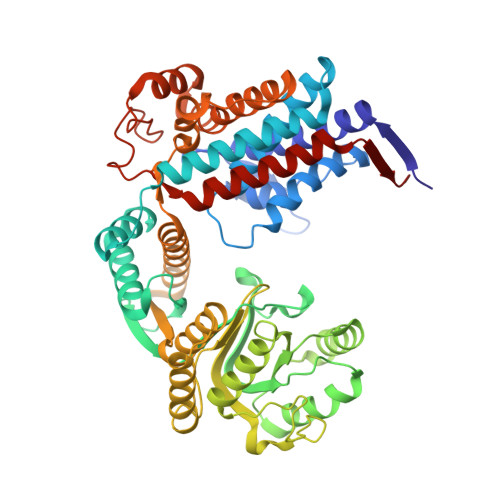Cryo-EM structure and molecular dynamic simulations explain the enhanced stability and ATP activity of the pathological chaperonin mutant.
Syed, A., Zhai, J., Guo, B., Zhao, Y., Wang, J.C., Chen, L.(2024) Structure 32: 575-584.e3
- PubMed: 38412855
- DOI: https://doi.org/10.1016/j.str.2024.02.001
- Primary Citation of Related Structures:
8U39 - PubMed Abstract:
Chaperonins Hsp60s are required for cellular vitality by assisting protein folding in an ATP-dependent mechanism. Although conserved, the human mitochondrial mHsp60 exhibits molecular characteristics distinct from the E. coli GroEL, with different conformational assembly and higher subunit association dynamics, suggesting a different mechanism. We previously found that the pathological mutant mHsp60 V72I exhibits enhanced subunit association stability and ATPase activity. To provide structural explanations for the V72I mutational effects, here we determined a cryo-EM structure of mHsp60 V72I . Our structural analysis combined with molecular dynamic simulations showed mHsp60 V72I with increased inter-subunit interface, binding free energy, and dissociation force, all contributing to its enhanced subunit association stability. The gate to the nucleotide-binding (NB) site in mHsp60 V72I mimicked the open conformation in the nucleotide-bound state with an additional open channel leading to the NB site, both promoting the mutant's ATPase activity. Our studies highlight the importance of mHsp60's characteristics in its biological function.
Organizational Affiliation:
Department of Molecular and Cellular Biochemistry, Indiana University Bloomington, 212 S. Hawthorne Dr., Bloomington, IN 47405, USA.














